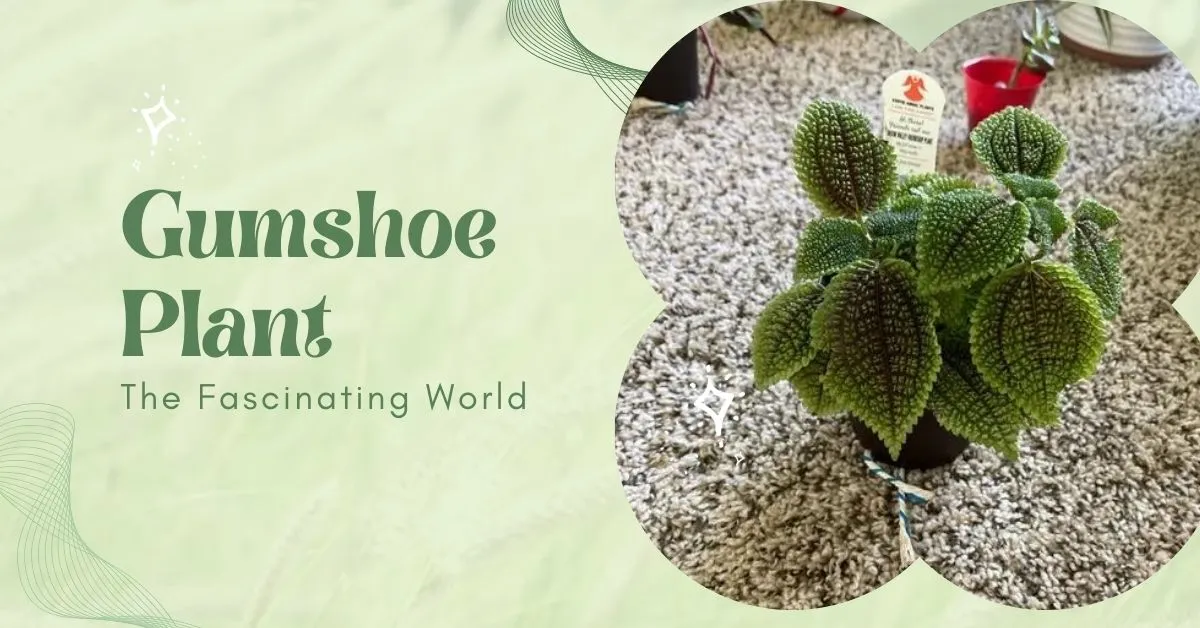The Fascinating World of the Gumshoe Plant
Have you ever heard of a plant so unique that it’s been nicknamed after the sticky soles of a detectives shoe? Enter the “gumshoe plant” a fascinating specimen known for its sticky, resinous properties that have intrigued botanists and plant enthusiasts alike. In this article, we’ll explore the world of the gumshoe plant, focusing on its characteristics, ecological significance, and cultural importance. Whether you are a seasoned gardener or a curious nature lover, the gumshoe plant promises to captivate you with its quirky charm and versatile uses. Join us as we delve into the details of this remarkable plant and uncover what makes it truly special.
What is the Gumshoe Plant?
The term “gumshoe plant” is a playful way to refer to certain plants, like the Grindelia camporum, known for their sticky, resinous properties. The nickname draws a whimsical parallel to the sticky soles of detective’s shoes, often called “gumshoes.” This term reflects the plant’s unique ability to produce a gum-like resin that has various practical uses.
Grindelia Camporum
One of the primary examples of a “gumshoe plant” is Grindelia camporum. This plant, commonly known as gumplant, belongs to the sunflower family (Asteraceae) and is native to North America. The Grindelia camporum is particularly common in California, where it grows in open fields and along roadsides. Its resilience and adaptability make it a significant species within its native habitats.
Characteristics of the Gumshoe Plant
- Appearance
The Grindelia camporum is a rangy plant that thrives in hot summer months. It can grow up to 3 feet tall and often has a sprawling form. Its stems are typically branched and can become woody at the base as the plant matures. The leaves are green, lance-shaped, and slightly sticky to the touch. The plant produces daisy-like flowers with bright yellow petals and a central disc that is a crucial pollen source for insects. The flower heads are composite, consisting of both ray and disc flowers, a characteristic feature of the sunflower family.
- Phyllaries
Phyllaries are the small, leaf-like structures that encase the flower bud before it opens. In gumplants, these phyllaries are glandular and sometimes recurved, producing a sticky, milky substance. This sticky secretion is rich in resin and serves multiple purposes, including deterring herbivores and protecting the flower buds from desiccation and insect predation. The glandular phyllaries give the flower heads a distinctive, almost glossy appearance.
- Resinous Nature
The sticky resin produced by the Grindelia camporum serves as a protective mechanism against herbivores and helps the plant retain moisture. This resin is what gives the plant its “gumshoe” moniker. The resinous secretion is particularly noticeable in hot weather, when the plant exudes more of this sticky substance. Historically, this resin has been used by Native Americans for its medicinal properties and as a natural adhesive.
Ecological and Cultural Significance
- Ecological Role
The gumshoe plant plays an important ecological role as a source of pollen for various insects, including bees, butterflies, and other pollinators. Its adaptability allows it to thrive in different soil types, from sandy to clayey soils, making it a resilient component of its native ecosystems. The plant’s ability to grow in disturbed areas also makes it an important species for habitat restoration projects. Furthermore, its sticky resin can trap small insects, adding an additional layer of protection to the plant while contributing to the local food web.
- Cultural Uses
Native Americans historically utilized Grindelia camporum for its medicinal properties, especially for treating lung problems such as asthma and bronchitis. The resinous substance from the plant was also used in natural remedies and as a protective coating for wounds. Additionally, the plant’s resin has been used as a natural gum and adhesive in various applications. The cultural significance of the gumshoe plant highlights its versatility and the deep knowledge indigenous peoples have about their natural environment.
Fun Facts and Trivia
- Common Names
The Grindelia camporum has several common names, including gumplant and tarweed, reflecting its sticky characteristics. These names highlight the plants distinctive resinous properties and its widespread recognition among different cultures and regions.
- Adaptations
The plant’s basal rosette, a cluster of leaves at the base, helps it survive in harsh conditions by minimizing water loss. This adaptation is particularly useful in arid environments where water is scarce. The plant’s ability to produce resin also helps it retain moisture and protect itself from herbivores. These adaptations demonstrate the plant’s resilience and its ability to thrive in challenging conditions.
Conclusion
The gumshoe plant, particularly the Grindelia camporum, is a fascinating example of nature’s adaptability and resourcefulness. Its sticky resin, daisy-like flowers, and important ecological role make it a unique and valuable plant. Whether you’re a gardening enthusiast or simply curious about the natural world, the gumshoe plant offers plenty of intriguing details to explore. Its cultural significance and ecological importance further underscore its value as a species. By learning about the gumshoe plant, we can gain a deeper appreciation for the diversity and ingenuity of the natural world.
FAQs
What is a gumshoe plant?
A gumshoe plant, often referring to Grindelia camporum, is known for its sticky, resinous properties. It is commonly called a gumplant and belongs to the sunflower family.
Why is it called a gumshoe plant?
The nickname “gumshoe plant” draws a whimsical parallel to the sticky soles of a detective’s shoes, highlighting the plant’s resinous nature.
Where is the gumshoe plant found?
Grindelia camporum is native to North America, particularly common in California, where it grows in open fields and along roadsides.
What are the characteristics of the gumshoe plant?
The plant has daisy-like yellow flowers, glandular phyllaries that produce a sticky resin, and green, lance-shaped leaves. It can grow up to 3 feet tall.
What is the ecological role of the gumshoe plant?
The gumshoe plant is an important pollen source for insects and thrives in various soil types, making it a resilient part of its ecosystem. It is also useful in habitat restoration projects.






